Bread Of Life Meaning In The Bible: Spiritual Nourishment
In biblical theology, the phrase ‘Bread of Life‘ connotes Jesus Christ as the fundamental source of spiritual nourishment, primarily elucidated in John 6:35. This metaphor, rooted deeply in Old Testament imagery such as manna and unleavened bread, underscores divine sustenance and purity.
Jesus’ declaration not only contrasts fleeting physical nourishment with enduring spiritual fulfillment but also invites believers to recognize
His essential role in achieving spiritual health and eternal life. Symbolically significant in Christian practices like the Eucharist, this concept encapsulates multifaceted theological and doctrinal dimensions that merit further exploration for a thorough understanding.
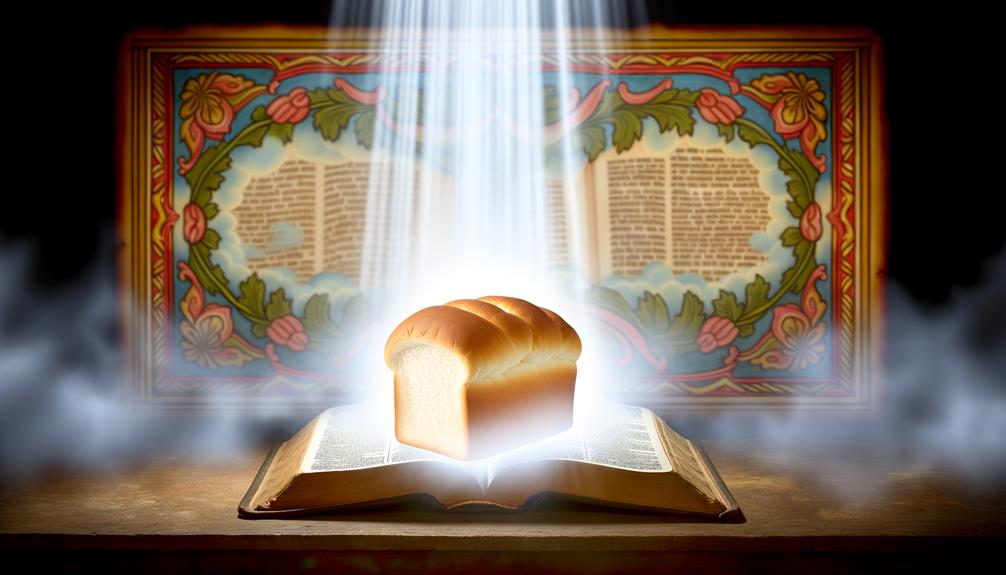
Bread of Life Meaning in the Bible: Spiritual Nourishment Through Christ
| Aspect | Details |
|---|---|
| Scripture Reference | John 6:35 – “I am the bread of life” |
| Context | After the feeding of the 5,000; crowd seeks more signs |
| Jesus’ Message | He offers eternal life, not just physical provision |
| Symbolism | Bread = essential for life; Jesus = essential for eternal life |
| Spiritual Insight | Faith in Christ satisfies the deepest spiritual hunger |
| Contrast | Physical manna vs. spiritual bread from heaven |
Biblical Origins

The phrase ‘Bread of Life‘ originates from the Gospel of John, where Jesus uses it as a metaphor to convey his role as the essential sustenance for spiritual life.
In John 6:35, Jesus declares, ‘I am the bread of life; whoever comes to me shall not hunger, and whoever believes in me shall never thirst.’
This metaphor underscores the necessity of a relationship with Jesus for spiritual fulfillment and eternal life.
By likening himself to bread, a fundamental staple in the ancient diet, Jesus emphasizes his indispensability in the spiritual domain.
This declaration situates Jesus at the center of spiritual nourishment, highlighting the transformative power of faith in him for believers.
Symbolism in the Old Testament
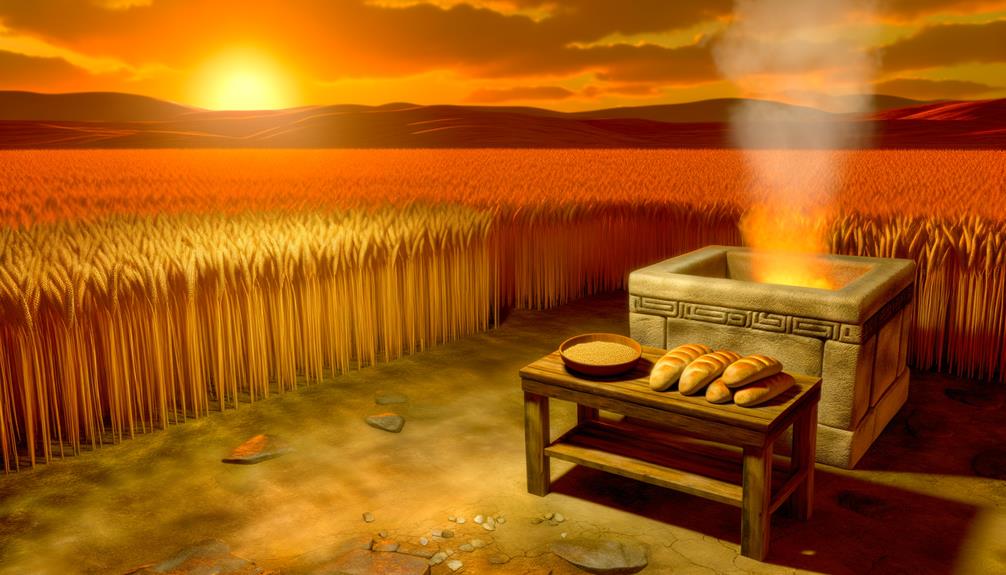
The Old Covenant is replete with symbolic references to bread, most importantly through the manna provided from heaven, which served as a divine sustenance for the Israelites during their wilderness sojourn.
Additionally, the unleavened bread of Passover carries profound theological implications, signifying purity and haste in the context of divine deliverance.
These instances collectively underscore the theme of God’s provision and faithfulness, laying a foundational understanding for the “Bread of Life” metaphor in later biblical texts.
This metaphor illustrates how God nourishes and sustains those who seek Him, much like bread sustains physical life.
In exploring the concept of the “Bread of Life,” one discovers the deeper implications of spiritual fulfillment that lead to an abundant life in biblical context.
Consequently, these texts invite believers to explore a relationship with the divine that transcends mere survival, promising a richness of experience rooted in faith and reliance on God’s unwavering presence.
Manna From Heaven
In the Old Scripture, manna from heaven serves as a profound symbol of God’s providence and sustenance for the Israelites during their exodus from Egypt. This miraculous bread-like substance, described in Exodus 16, epitomizes divine intervention in times of dire need.
The daily provision of manna not only satisfied physical hunger but also reinforced reliance on God’s continuous care. Each morning, the Israelites collected an omer per person, symbolizing God’s precise and sufficient provision.
Additionally, manna’s ephemeral nature, spoiling if hoarded, underscores the necessity of daily dependence on divine grace. By instituting this rhythm of dependence, the narrative of manna transcends mere physical sustenance, illustrating a deeper theological truth about faith, trust, and the unwavering presence of God in human lives.
Passover Bread Significance
Just as manna from heaven symbolized divine sustenance and reliance, the unleavened bread of Passover embodies profound theological significance within the Old Scriptures narrative.
This bread, known as matzah, represents the haste in which the Israelites fled Egypt, leaving no time for dough to rise. Its consumption during the Passover Seder is a ritualistic remembrance of liberation and the covenantal relationship between God and His chosen people.
Furthermore, the absence of leaven, often a symbol of corruption and sin, underscores the call to purity and holiness.
Consequently, unleavened bread transcends its physical form, serving as a symbol of deliverance, sanctity, and the enduring faithfulness of God amidst the trials of His people.
Sustenance in Wilderness
Central to the narrative of sustenance in the wilderness within the Old scripture is the profound symbolism of manna, which epitomizes God’s providential care and the Israelites’ dependency on divine provision during their exodus journey.
This miraculous bread from heaven not only met their physical needs but also served as a tangible reminder of their reliance on God.
The daily gathering of manna was emblematic of trust and obedience, reinforcing the covenant relationship between God and His people.
| Aspect | Symbolism | Significance |
|---|---|---|
| Manna | Divine Provision | God’s care and sustenance |
| Daily Gathering | Trust and Obedience | Dependent relationship with God |
| Wilderness | Testing Ground | Spiritual refinement and reliance on divine guidance |
| Exodus Journey | Liberation and Faith | Shift from bondage to a divinely led communal identity |
Jesus’ Declaration
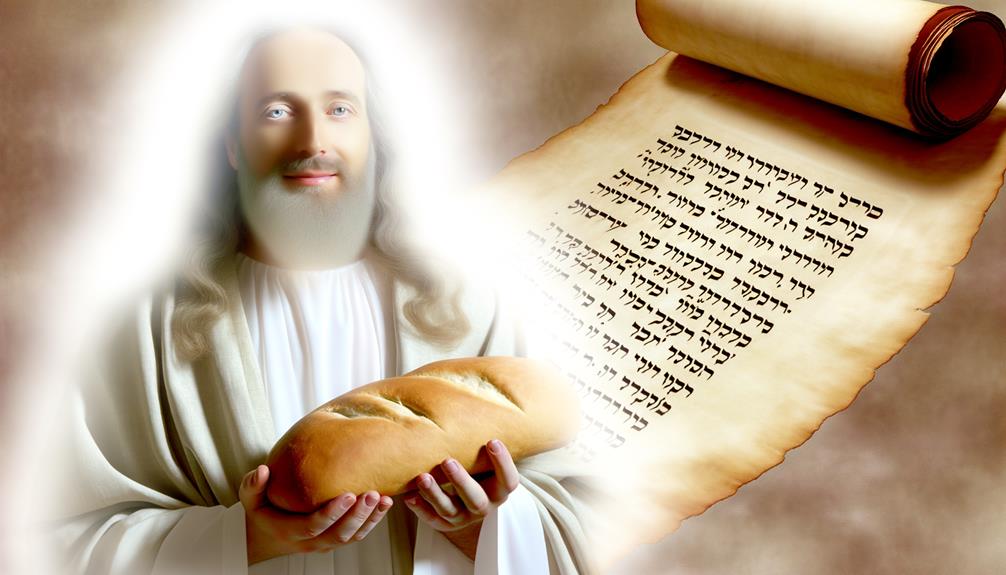
Jesus’ declaration, ‘I am the bread of life,’ found in John 6:35, serves as a profound metaphor that underscores His role as the crucial sustenance for spiritual life.
This proclamation directly aligns with the Jewish understanding of bread as a fundamental dietary staple, therefore contextualizing Jesus as indispensable for spiritual vitality.
His statement invites a deeper theological reflection on the nature of divine provision, contrasting transient physical nourishment with enduring spiritual fulfillment.
By positioning Himself as the ‘bread of life,’ Jesus not only claims a unique divine identity but also offers Himself as the ultimate source of spiritual sustenance.
This declaration challenges believers to perceive Him as the central, life-sustaining force in their spiritual journey.
Spiritual Nourishment
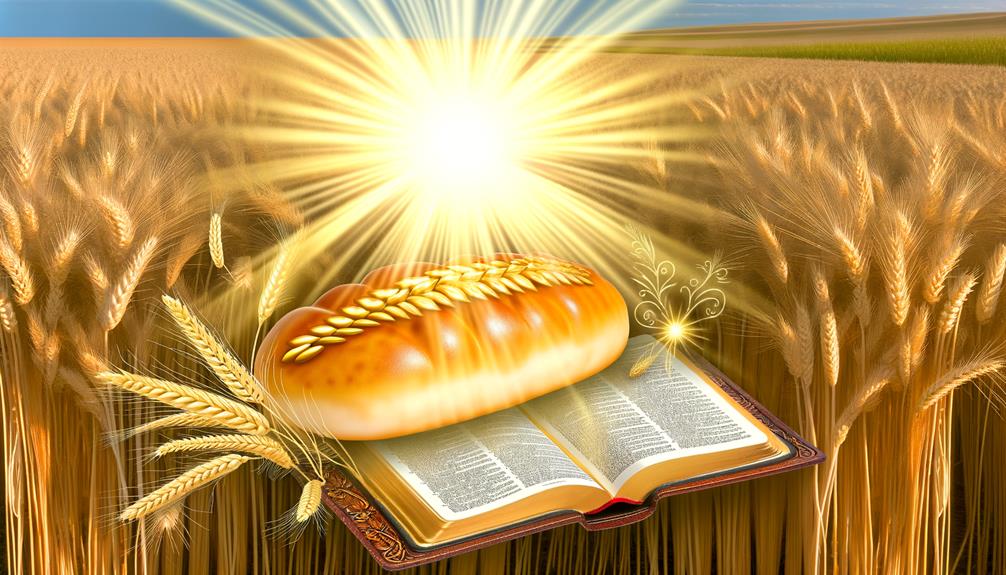
Building upon Jesus’ declaration, the concept of spiritual nourishment emerges as a central theme, emphasizing the intrinsic connection between divine sustenance and the believer’s spiritual growth and well-being.
In the biblical context, Jesus as the Bread of Life signifies more than physical sustenance; it denotes a profound, ongoing spiritual nourishment that fosters a deeper relationship with God.
This spiritual sustenance is essential for maintaining faith, understanding scripture, and living a life aligned with divine principles.
| Aspect | Physical Bread | Spiritual Bread |
|---|---|---|
| Source | Earthly | Divine |
| Sustains | Physical Body | Spiritual Life |
| Duration | Temporary | Eternal |
| Consumption | Regularly Required | Continual Relationship |
| Outcome | Physical Strength | Spiritual Growth |
Thus, spiritual nourishment is integral to the believer’s journey.
Connection to Eternal Life

Intrinsically linked to the concept of spiritual nourishment, the Bread of Life metaphor extends into a profound theological assertion that underscores the believer’s access to eternal life through a sustained, intimate relationship with Jesus Christ.
This metaphor signifies more than mere sustenance; it encapsulates the promise of everlasting life as granted by faith in Him.
Key aspects include:
- Divine Provision: Jesus as the Bread of Life is a divine provision, indicating that spiritual fulfillment and eternal life come exclusively through Him.
- Perpetual Sustenance: Unlike physical bread, which temporarily satiates, the Bread of Life offers perpetual spiritual sustenance, symbolizing eternal life.
- Covenantal Relationship: Embracing the Bread of Life implies entering into a covenantal relationship with Jesus, characterized by ongoing faith and communion.
The Eucharist
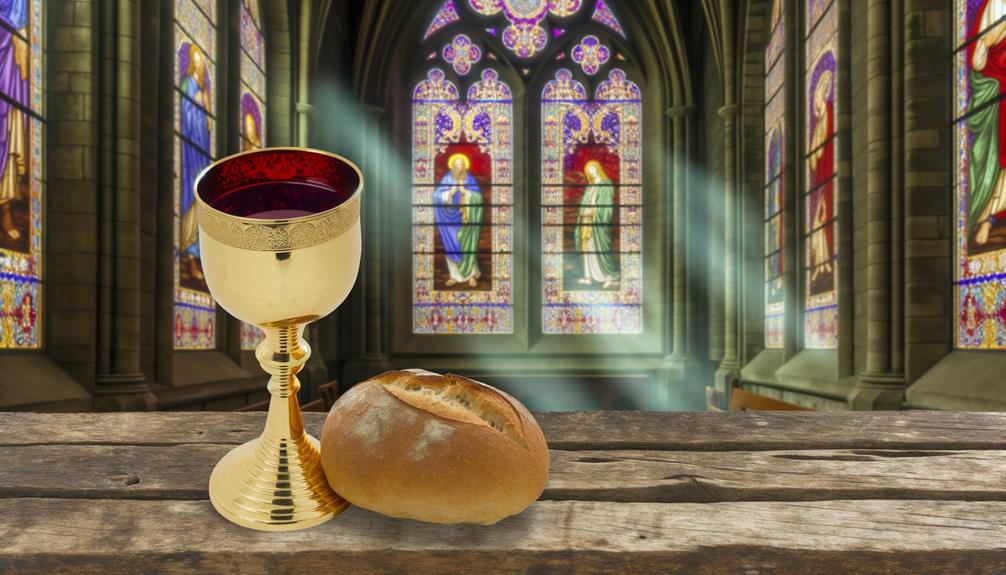
The concept of the Bread of Life reaches its profound liturgical expression in the Eucharist, where believers partake in the body and blood of Christ, symbolizing their deep communion with Him and reaffirming their faith in the promise of eternal life.
Rooted in Jesus’ Last Supper, the Eucharist serves as a tangible manifestation of divine grace. The elements of bread and wine transcend their physical properties, becoming sacred symbols of Christ’s sacrifice.
This sacramental act, celebrated within the liturgy, is a central tenet of Christian worship, encapsulating theological doctrines of atonement and redemption.
Interpretations Over Time

Throughout history, myriad interpretations of the ‘Bread of Life’ have emerged, reflecting diverse theological, cultural, and historical contexts. These interpretations highlight the complexity and depth of this biblical metaphor:
- Early Church Fathers: Figures like Augustine and Ignatius viewed the ‘Bread of Life’ as a symbol of spiritual nourishment, essential for eternal life.
- Medieval Scholastics: Scholars such as Thomas Aquinas emphasized the Eucharistic aspect, connecting the ‘Bread of Life’ directly to the sacrament of Communion.
- Reformation Thinkers: Reformers like Martin Luther and John Calvin offered varying perspectives, with Luther’s consubstantiation and Calvin’s symbolic interpretation, both diverging from traditional Catholic views.
Each interpretation underscores the evolving understanding of this pivotal biblical symbol.
Relevance for Today’s Believers
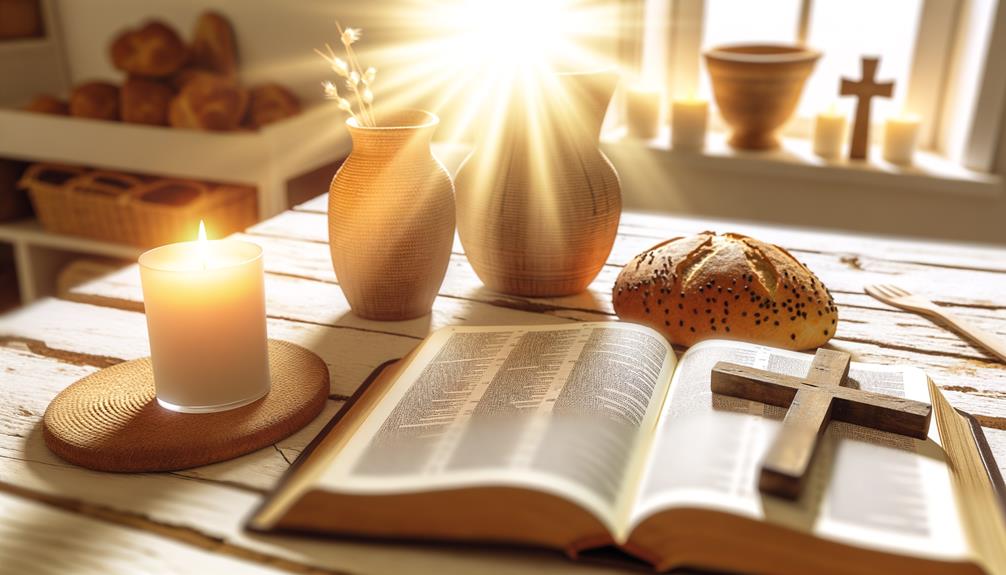
In what ways does the metaphor of the ‘Bread of Life‘ continue to sustain and inspire contemporary believers, prompting a deeper reflection on their spiritual journey and communal practices?
The ‘Bread of Life’ metaphor remains profoundly relevant as it encapsulates the essence of spiritual nourishment and divine sustenance. Today’s believers find in it a compelling call to seek sustenance beyond material needs, fostering a reliance on Christ for spiritual fulfillment.
This metaphor also reinforces the communal aspect of faith through shared practices such as communion, which serves as a tangible reminder of Christ’s sacrifice.
Conclusion
The ‘bread of life‘ metaphor, deeply rooted in biblical origins and rich with Old Covenant symbolism, represents spiritual nourishment and a connection to eternal life through Christ.
Jesus’ declaration and the Eucharist further underscore its profound theological significance.
Over time, interpretations have evolved, yet the concept remains a cornerstone of Christian faith.
Today, it continues to offer sustenance for the soul, a divine manna that transcends temporal boundaries, providing timeless relevance for believers.






